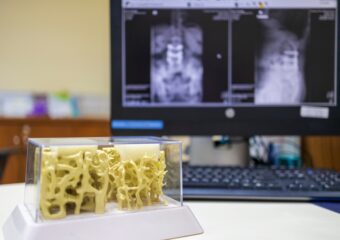
Minimally Invasive Laminectomy/ Foraminotomy

Minimally invasive laminectomy/ foraminotomy is a surgical procedure used to address issues related to nerve compression in the spine, specifically in the foraminal space. The foramina are small openings between vertebrae through which spinal nerves exit the spinal cord.




This procedure is designed to relieve pressure on these nerves, alleviating symptoms such as pain, tingling, or weakness. During minimally invasive foraminotomy, the surgeon makes small incisions, typically less than an inch in length. Specialized instruments are used to access and visualize the affected area of the spine. This minimally invasive approach aims to minimize disruption to surrounding tissues and muscles. The surgeon then removes a small portion of bone or tissue that may be compressing the spinal nerves within the foraminal space. This targeted removal enlarges the foraminal opening, providing more space for the nerves and reducing the compression. A complete laminectomy can be performed through a unilateral approach by drilling away the opposite lamina and removing ligament to create a larger spinal canal.
The benefits of minimally invasive laminectomy/foraminotomy often include a shorter recovery time, less postoperative pain, and a quicker return to normal activities compared to traditional open surgery. The precise nature of the procedure allows for targeted intervention while preserving the integrity of the surrounding structures.
Book An Appointment
"*" indicates required fields








